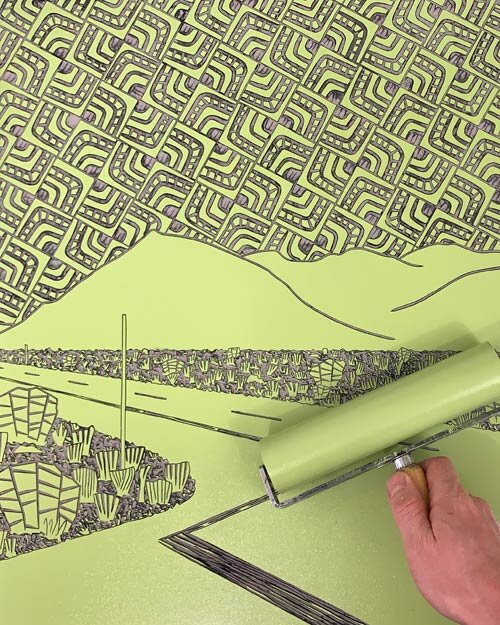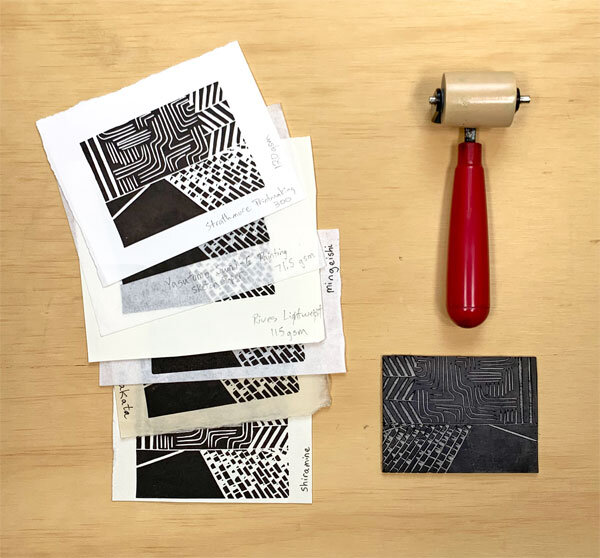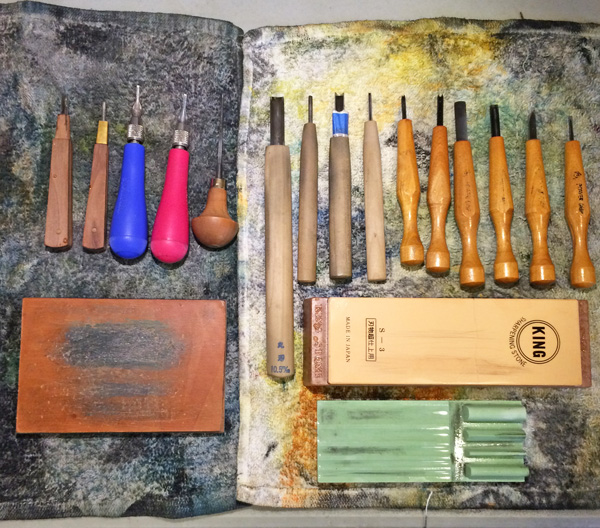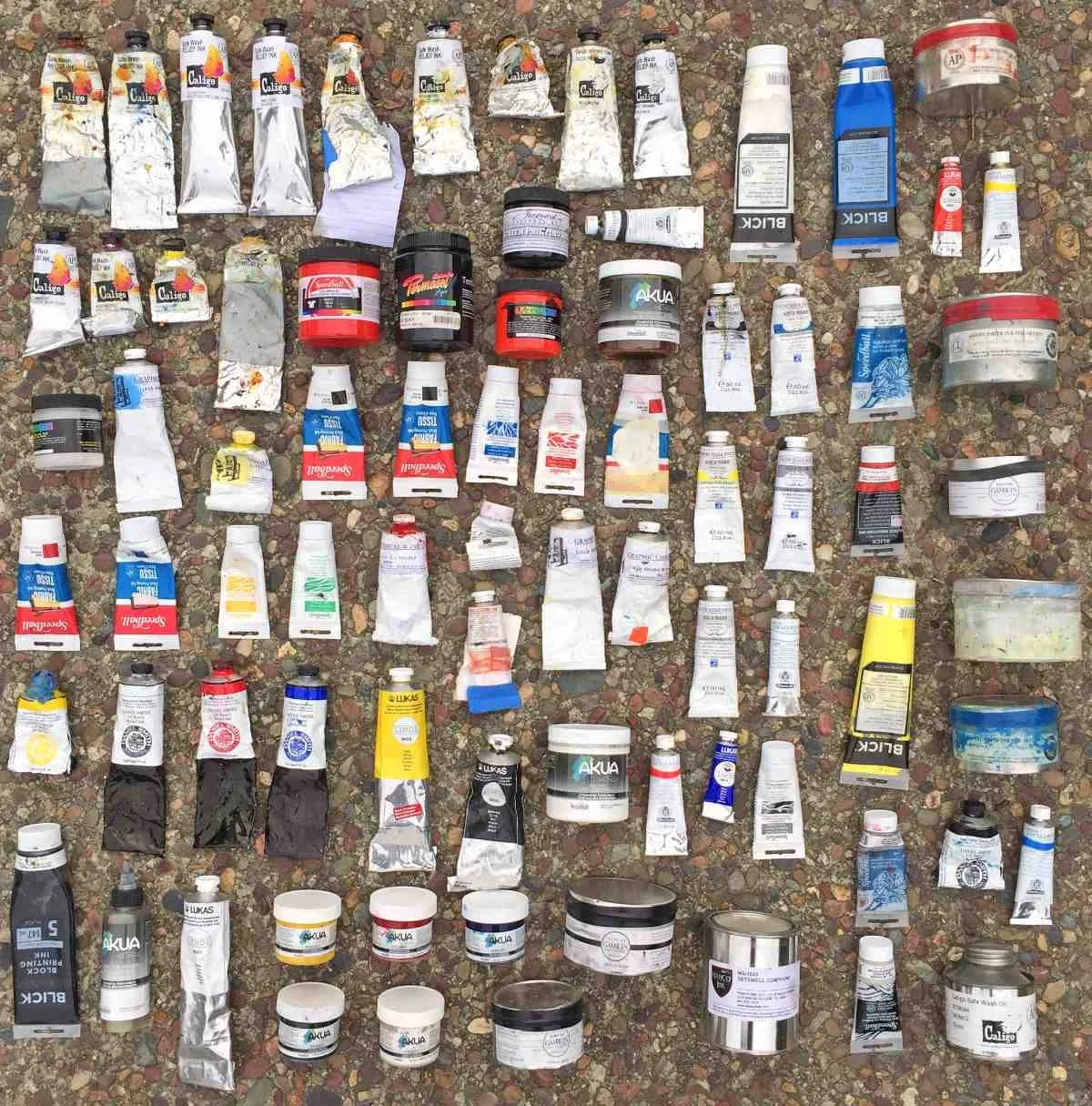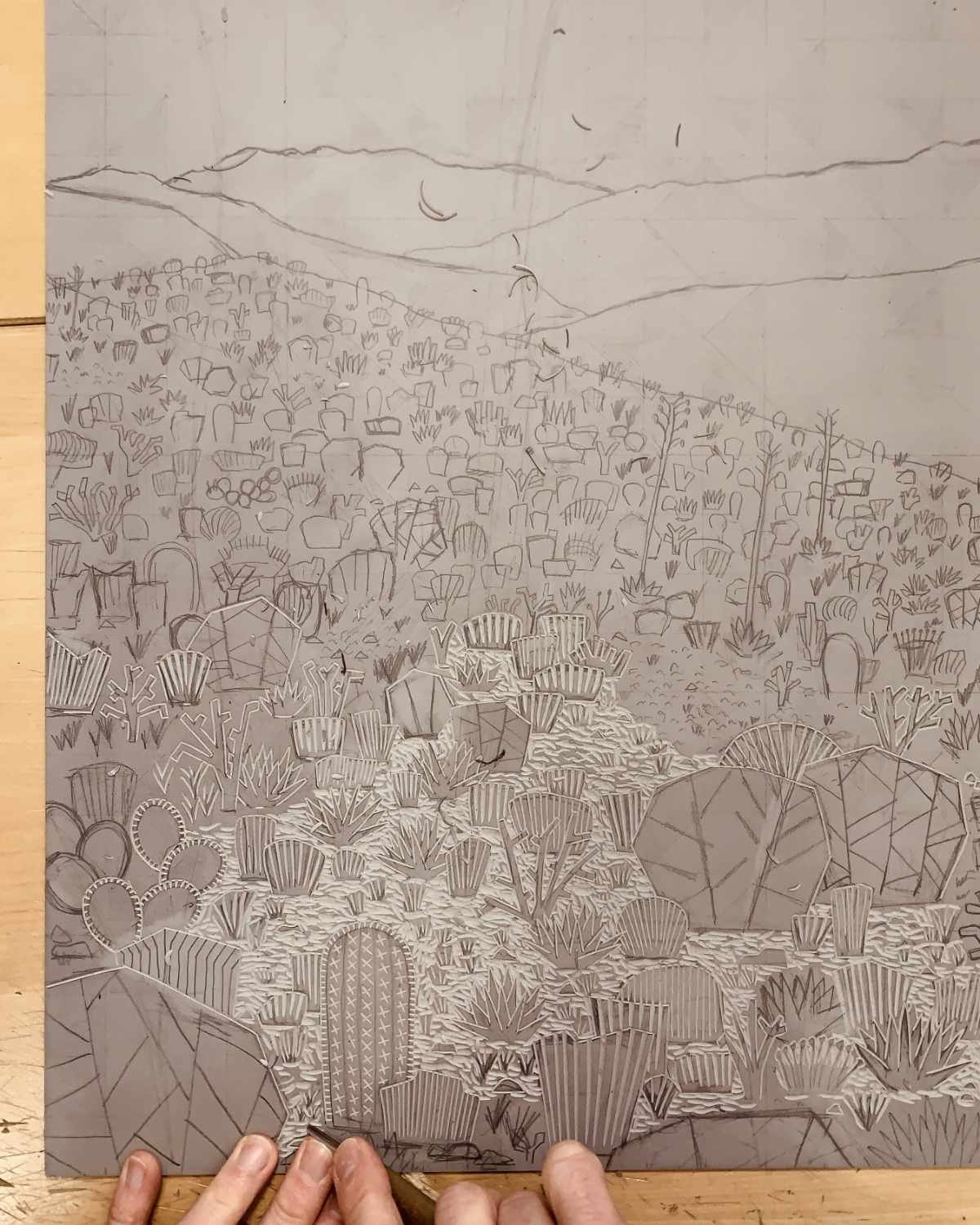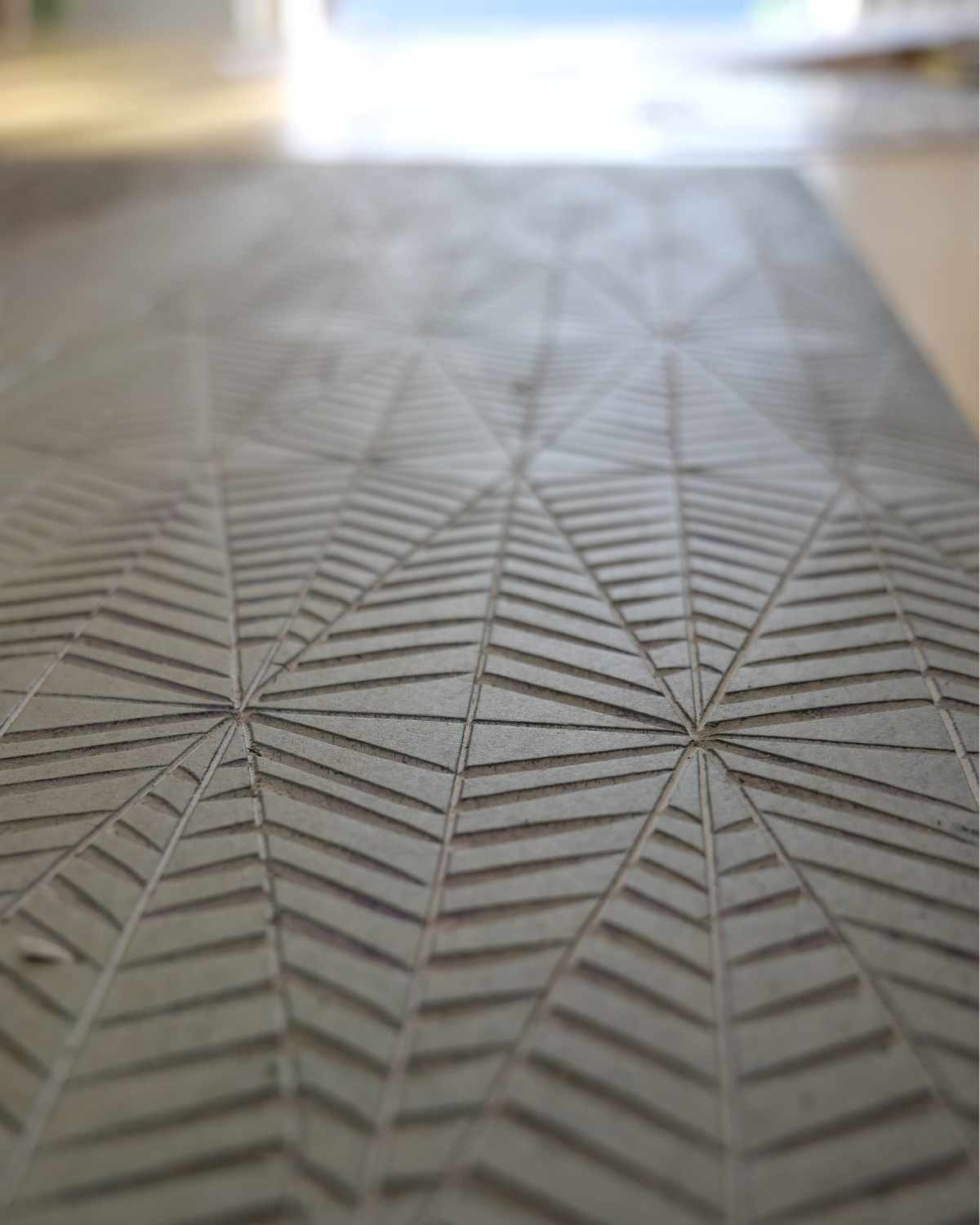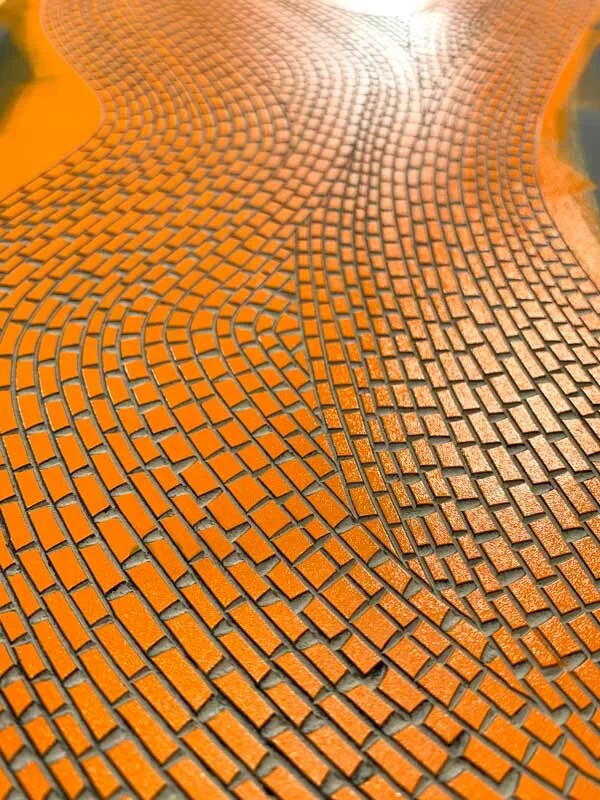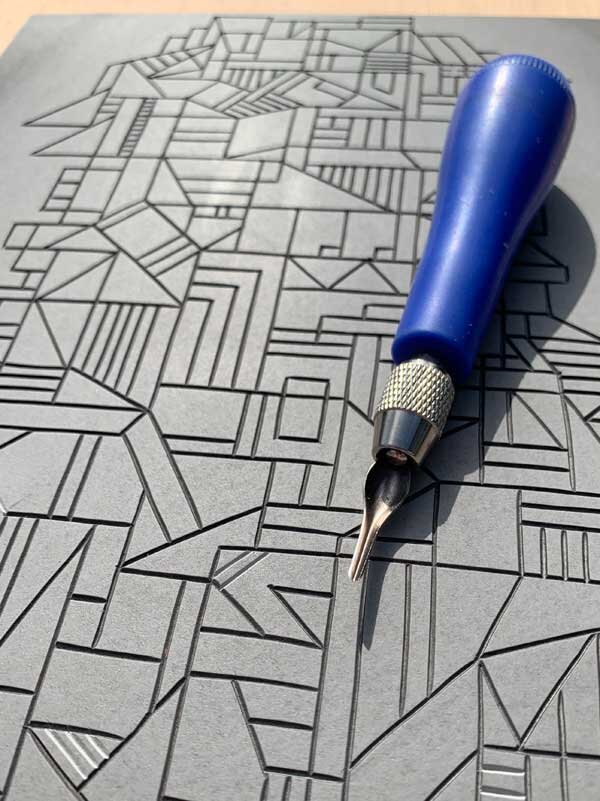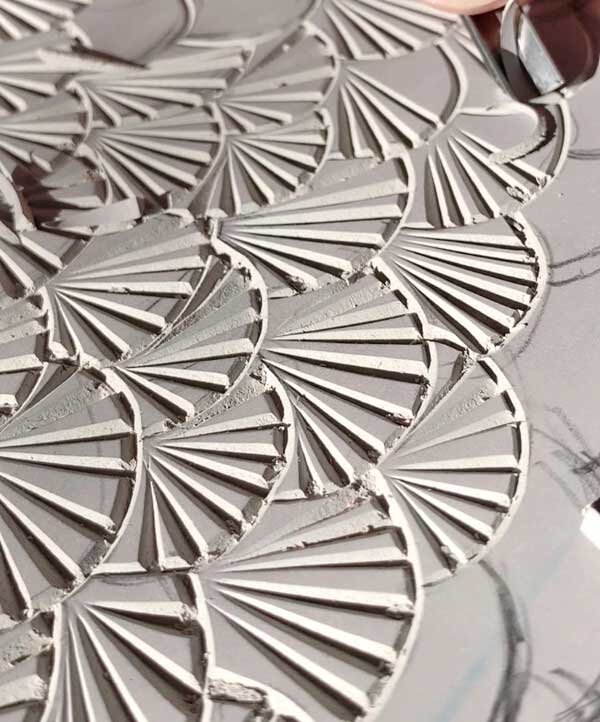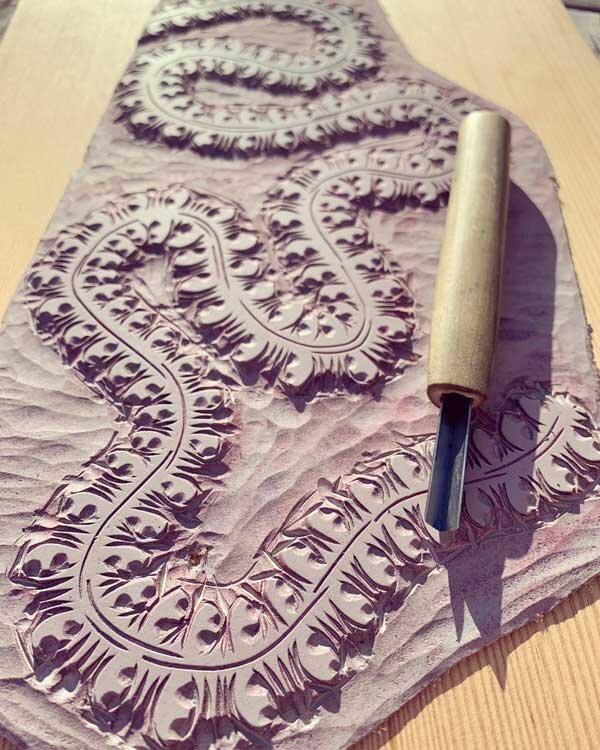I’m working on a couple multicolor linocuts of desert landscapes. This one highlights a lot of desert plant patterns and details.
The image below was drawn directly on the 16”x22” linoleum block.
I came up with a geometric pattern for the sky and carved it with v-gouge tools.
Geometric linocut pattern used for the desert sky
Here are some Instagram videos of me inking up the desert plants and sky with printmaking ink for test prints.

